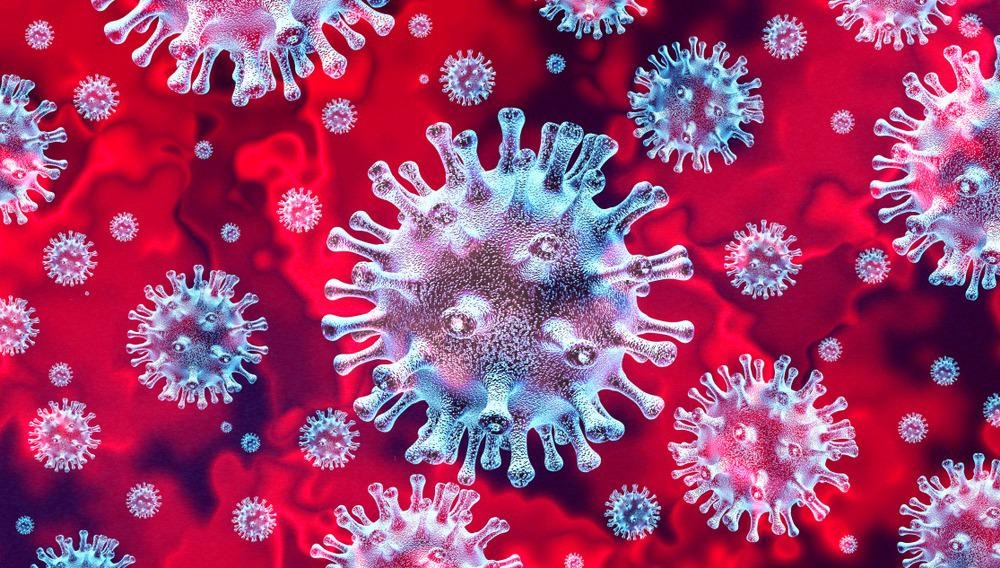A new injectable biosensor could provide an early warning system of COVID-19 infection, spotting the virus up to 48 hours before symptoms appear.

Image Credit: Lightspring/Shutterstock.com
With the roll-out of COVID-19 vaccines well underway in most developed countries, attention is now beginning to focus on other aspects of the fight against the virus that has significantly changed our lives.
One of the most crucial aspects of the COVID-19 battle is the early detection of the virus. Because of how it can be transmitted before symptoms manifest, and because many people with the disease will remain asymptomatic, spotting COVID-19 early is vital in slowing its spread.
Help could be on the way from a slightly unorthodox source. The US Defense Advanced Projects Agency (DARPA) is supporting a sensor that could be injected under the skin to continuously monitor for the presence of COVID-19¹.
Rather than looking for the virus itself, the platform backed by DARPA tracks a subject’s vitals and is able to flag the presence of viral infection as early as two days before symptoms manifest.
This is convenient to slowing the spread of COVID-19 as it matches the 48-hour time scale before symptoms appear when a person infected with the disease can transmit it to others.
The biosensor being developed in conjunction with PROFUSA² could also be used to detect flu-like viruses from their effect on the human body.
The sensor is just one of the many projects being supported by DARPA that are designed to tackle the ongoing COVID-19 crisis.
The Injectable Biosensor
The DARPA-supported injectable sensor is made up of two distinct parts; a 3mm string of hydrogel — a network of cross-linked hydrophilic polymer chins — and an electronic signal detector.
The hydrogel string is injected under the subject’s skin. It includes a specifically engineered molecule that sends a fluorescent signal when it picks up signs of the body’s response to viral infection, including a sudden change in oxygen levels.
The detector receives the signal and is placed on the subject's skin outside the body. In response to receiving the signal, the electronic component generates a second signal sent to the subject and their selected medical professional.
The injectable sensor supported by DARPA is not sensitive enough in isolation to distinguish COVID-19 from other viruses that cause similar symptoms, say its developers.
When deployed, it will need to be used in conjunction with other testing and detection methods. But the advantage of an early warning system in the fight against the spread of this virus should not be underestimated.
Fortunately, DARPA supports a host of other projects that could create detection methods to be paired with the injectable sensor to deliver a conclusive diagnosis.
DARPA Innovating COVID-19 Strategies
In addition to this injectable sensor, DARPA is working on a range of other COVID-19 detection strategies.
These include diagnostic platforms such as Detect It with Gene Editing Technologies (DIGET) and the Epigenetic CHaracterization and Observation (ECHO) programs. DIGET focuses on the rapid discovery of pathogens, including COVID-19, while ECHO is another technique that focuses on detecting the body's response to a pathogen rather than the pathogen itself.
DARPA has also teamed with the University of Illinois to develop a pathogen-detecting system called the Friend or Foe program. While this predates the COVID-19 pandemic, efforts have shifted to enable the platform to provide a quick and efficient SARS-CoV-2 diagnosis.
The system — which spots attacks on cell membranes, the first step of COVID-19 infection — has been shown to deliver a diagnosis from a nasal swab sample within 30 minutes. It can be deployed from test cartridges, which means the method can be scaled up to perform hundreds of thousands of tests.
DARPA’s approach to COVID-19 goes beyond detection and diagnosis, however, with efforts that include vaccines, antibody treatment, rapid drug deployment, and aerosol monitoring also being supported by the division of the US military.
From its origins in the late 1950s, in response to the USSR’s launch of Sputnik, DARPA's mission has been to pioneer technological innovation. Over recent years, they have been involved in developing eye-catching technology such as a robotic cheetah.
Some of DARPA’s success stories have included developing the personal assistant program SIRI, Roomba vacuum cleaners, and the Moderna mRNA vaccine, which has also had a major impact in the fight against COVID-19.
DARPA hopes to kit out military personnel with the injectable COVID-19 section system, but should it be effective, it could be deployed across a range of other industries.
References and Further Reading
¹ ‘The DARPA Difference: Pivoting to Address COVID,’ DARPA, [2021], [https://www.darpa.mil/work-with-us/covid-19]
² Profusa [https://profusa.com/]
Disclaimer: The views expressed here are those of the author expressed in their private capacity and do not necessarily represent the views of AZoM.com Limited T/A AZoNetwork the owner and operator of this website. This disclaimer forms part of the Terms and conditions of use of this website.